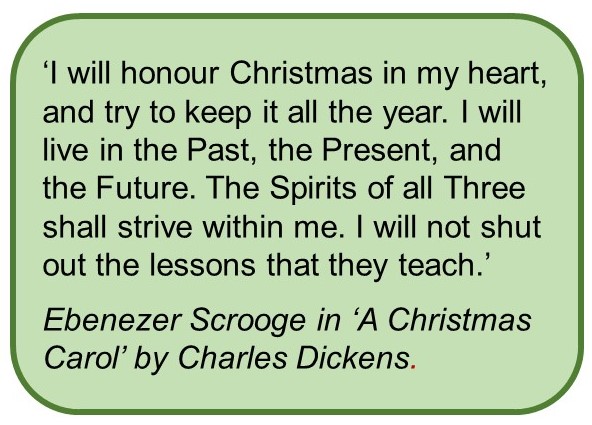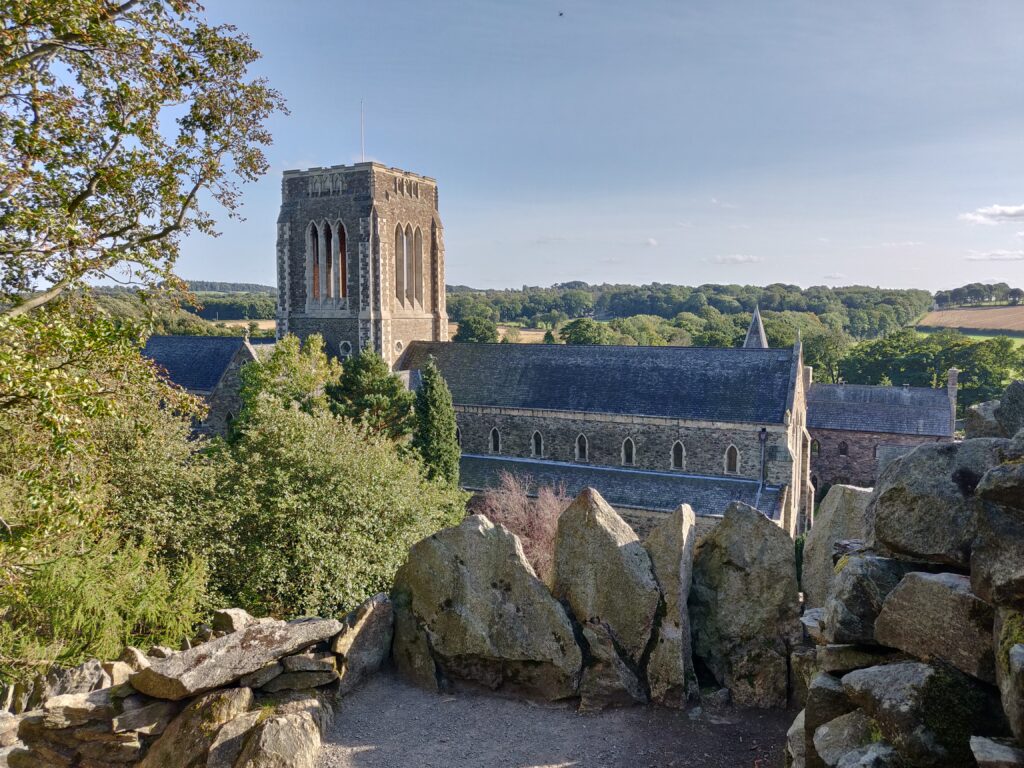Charles Dickens visits Mount Saint Bernard’s Abbey
24 December 2020
In an article entitled ‘Out of the World,’ which appeared in ‘All the Year Round’ in 1859, Charles Dickens describes a visit to St. Bernard’s Monastery one Christmas Eve, nearly 90 years ago.*
Travelling by train from Euston he eventually arrived at ‘Buffborough,’ where he was met by an unnamed sombre individual who advised dining at ‘The Bull’s Head’ before setting off on the eight mile drive across country.
The meal, Dickens wrote, was utterly ordinary and unexciting. In the room above, convivial farmers were ‘keeping it up,’ clinking glasses, roaring out orders and ‘singing such long choruses as only heard in similar places.’
During dinner the author had been speculating as to what sort of vehicle would be provided to carry him to the Monastery. “I expected something quaint, odd, curious, a tumbril, perhaps driven by a novice, and drawn by a fat, lazy do-nothing horse.” He confesses his disappointment on finding a neat phaeton, hired from the inn, awaiting his pleasure.
He did begin to feel a little more romantic. “We turned out of the main road, and proceeded along what is little better than a bridle path, worn by long-continued rain, and intersected with deep ruts; high on either side rose green banks topped with a few scattered shrubs, bending mournfully in the wind blowing across the dreary landscape in fitful gusts.”
ST. JOSEPHS HOUSE
Darkness had fallen when the travellers reached ‘St. Joseph’s House,’ where guests of the Monastery were received when the Monastery itself was filled. “I caught a glimpse of a huge mass of rock surmounted by a tall cross when we finally drew up before a heavy Gothic building, in the large porch of which stood a Monk, a bona fide Monk, with close cropped hair, long white flannel robe and cowl, dark scapulary (as spelt) and all monastic appurtenances fitting.”
The distinguished visitor was apparently very well pleased with the warm reception accorded him and comments appreciatively on the accommodation and amenities provided for his use.
At first the dead silence oppressed him, “but it must be favourable to meditation, I suppose, for a few minutes I found myself seated on the bed and deep in reveries. Last night, I was at the theatre, joining in a laughing chorus some two thousand strong. Where am I now? In a cold grey building, situated in the midst of the wildest forest scenery, and inhabited by a few men who exist indeed, but scarcely be said to live.”
Dickens was evidently not much impressed by the asceticism of the St. Bernard community, and one feels an undercurrent of disapproval running through much of his description. Nevertheless, he took a liking to at least one of his hosts, Father Lawrence, the Guest Master, of whom he says, “I have never seen a sweeter expression of face, slightly worn, slightly ascetic, but when he smiles his grey eyes light up, his white teeth gleam, and he is the embodiment of good humour.”
THE REFORMATORY
It was Father Lawrence who took him to see the nearby reformatory for Roman Catholic boys, some 200 of them, all criminally convicted, who broke off their games when he arrived to flock round his companion, for whom they showed the greatest affection.
The visit coincided with a ceremony, conducted by the Abbot, in consecration of the new image of the Virgin Mary presented by friends of Father Lawrence to the Boys’ Chapel.
THE MONK WHO DIED
It was immediately after the service that Dickens’ new acquaintance collapsed in the middle of a conversation. Dickens caught him as he fell, and was shocked and horrified to see him die. Small wonder, then, that the remainder of his visit passed as a bad dream. He says, “…. but one recollection is boldly prominent and that is my astonishment at the apathy of the dead man’s comrades …. a young man, apparently in full health, is struck down, and with less than five minutes warning is numbered with the dead, and scarcely the least sign of sorrow, or even surprise, is exhibited by those among whom several years of his life have been passed.”
Description of ritual, service and ceremony follows, but behind and through it all Dickens sees the dead man’s face. He cannot shut it out. When, on taking his leave he is asked to visit the Monastery at some more favourable season he says, “Perhaps I may, for though I was enabled to see but little of the ordinary lives and habits of those monks, never were the events of any twelve hours so firmly impressed on my mind as those which I spent ‘Out of the World.’
By T. D. Pearce, 1st February 1943
*Extract from an article which appeared in ‘The Loughborough Echo, on December 26th, 1947, written by Mr. T. D. Pearce, the Borough Librarian, from a collection of news cuttings made by the late Rev. W. G. Dimlock Fletcher which were held at Loughborough Public Library.
This item was sent to us for posting by Loughborough Library Local Studies Volunteers, with special thanks to Gerald Berrington.

‘We always read ‘A Christmas Carol’ at Christmas time – it’s often on the television, too. He likes old Dickens don’t you? Every Christmas for as long as I can remember. We read it aloud so we can read it together.’
Memories of Christmas as shared by a resident of a local care home for the elderly and her husband in December 2019.
Listen to a re-telling of ‘A Christmas Carol’ here.
